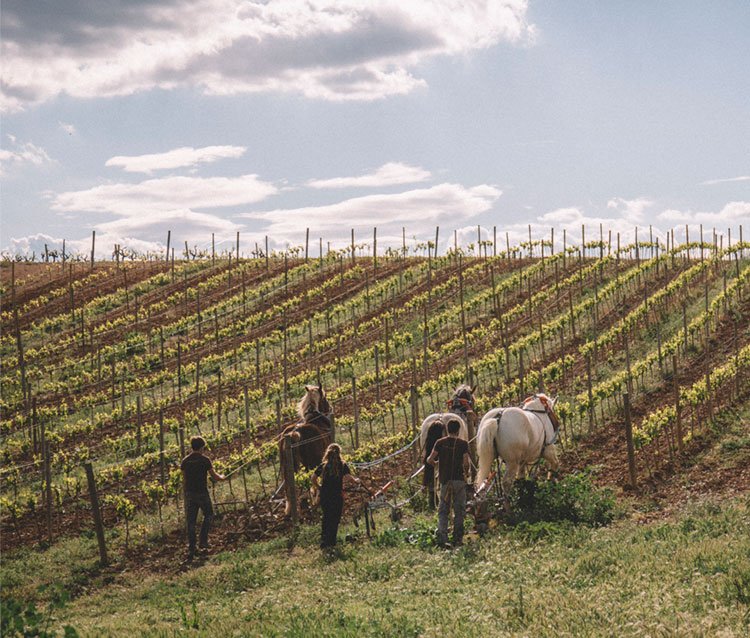Making Paella
Adelina Beneit, the agile and perpetually smiling matriarch of Mas Palou, was preparing piles of glistening seafood: mussels, massive shrimp, and bone-colored scallops, and heating up the massive pot. “the most important thing in the paella is to have fresh ingredients,” she notified the Danish family of five that was staring at her work while nibbling on chips and fuet, a type of Catalan sausage.
The Valles family kitchen mixes old and new: the stove is electric and the dishwasher and double-door fridge are cleverly concealed as wooden cabinets, but the reddish brick ceiling and the darkened oil painting on the wall betray the age of the house.
She poured olive oil generously into the hot pan, and the shrimp sizzled and shrank as they touched it—she fried them until she was contented, took them out into a plate, and repeated the process with the mussels, cockles, scallops, then adding chunks of chicken, pork and rabbit meat, bell peppers, tomatoes, and onion. “the vegetables need to cook for the longest time,” she announced. “this is the basis of every Catalan dish. It’s the best.” The Danish Family, still mesmerized by the performance, didn’t think to argue. We sipped our wine—dry, local cabernet—and ate some homemade bread with tomato and olive oil—a Catalan toast—and tried to distract ourselves from the enticing scents of the separate cooking stages, merged into each other by the early evening breeze.
With the deft hand of a long-time homemaker, Adelina took some spoonfuls of the bell-pepper sauce out of the pan and spread it onto a sheet of flatbread dough, to make coca de recapte—which she topped off with anchovies and olive tapenade. “I think I will also make you a cake” she said as she plopped heavy dollops of orange confiture and sweet pumpkin puree on another sheet of dough, rolled on to make tiny holes. The Danish lady got up suddenly, picked up a fork, and demonstrated how she would poke holes in the dough to make her variation of the cake: they both laughed in unexpected, but welcome, camaraderie. Adelina brushed the cake with egg beat and topped it with caramelized almonds, and slid both pans in the oven.
Now, the time has come to add the rice, fish broth, and saffron to the pan, along with the meat. After a quick stir, Adelina arranged the shrimp and mussels in equal distances, facing the center in a reddish mandala, and covered the pot. The scent of the ingredients melting into the broth and saffron is glorious, and we waited, breathing it in.
We talked about the family’s vacation—they are spending a week in the house and then embark on a yacht along the Spanish coastline—as their one-year-old son stood at the glass door, fixated on the dog looking back at him from the other side. Maria, Adelina’s daughter, snappy-dressed and brisk, set the table in the dining room: an older, lavish room where a heavy iron chandelier adorned with dark bat wings shed light over the dinner table.
Finally, Adelina took the pot off the fire, and covered it with a towel. “now we wait five more minutes.” She took the coca de recapte and cake out of the oven to cool on the kitchen counter. Maria arranged slices of tomatoes and fresh mozzarella on a tray, and topped them with basil she had picked from the garden. The dishes and Danes were ushered into the dining room, to marvel at the pot of warm-colored, carefully arranged paella as if they were seeing it for the first time. The warm, deep flavor of the Paella, along with the smooth and cold caprese salad and the crispy, savory coca de recapte, were pure heaven.









